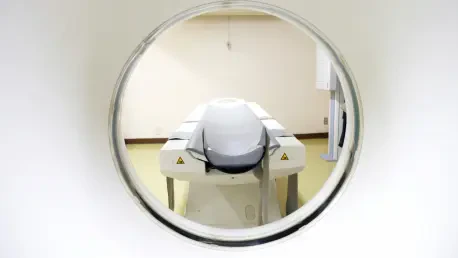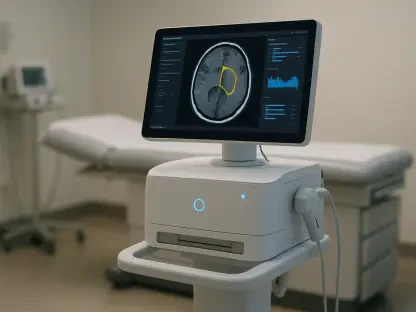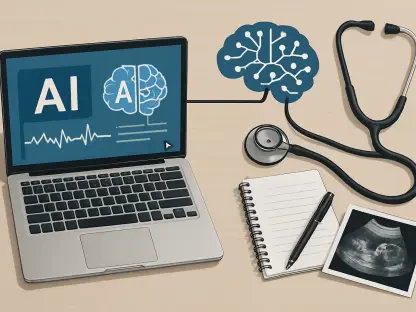Positron emission tomography (PET) imaging has emerged as a vital tool in modern medical diagnostics, offering insights into the human body’s molecular and cellular functions. At the forefront of this advancement are radiopharmaceuticals, specialized compounds that combine a radionuclide with a targeting molecule, enabling non-invasive assessment of diseases. Currently, the radiopharmaceuticals market in PET imaging is on an impressive growth trajectory, projected to expand at a compound annual growth rate (CAGR) of 7.1% from 2025 to 2034. This growth is driven by an increasing demand for early disease detection and a shift towards personalized healthcare solutions. In the near future, the impact of radiopharmaceuticals on PET imaging is set to revolutionize the fields of oncology, neurology, and cardiology, offering unprecedented precision in diagnosing and managing various ailments.
The Growing Role of Radiopharmaceuticals in Diagnostics
Radiopharmaceuticals are revolutionizing diagnostic methodologies by enabling clinicians to visualize and quantify metabolic changes at the cellular level. This advancement is crucial in fields like oncology and neurology, where early and accurate diagnosis significantly influences treatment outcomes. In oncology, PET imaging utilizing radiopharmaceuticals has become indispensable for understanding cancer metabolism, aiding in early detection, monitoring disease progression, and evaluating therapeutic efficacy. Similarly, in neurology, these compounds facilitate the study of complex pathologies such as Alzheimer’s and Parkinson’s diseases, providing insights into brain function and assisting in the development of novel treatments.
The technological progress surrounding PET imaging continues to accelerate, largely spurred by the development of new radiotracers, which enhance diagnostic precision and reliability. These advancements, coupled with increased healthcare spending and a heightened focus on precision medicine, are sparking widespread adoption of radiopharmaceuticals in clinical settings. As healthcare systems worldwide strive for increased efficiency and improved patient outcomes, radiopharmaceuticals are poised to address these needs, underscoring their growing importance in medical diagnostics. The trajectory of this sector foresees more personalized, targeted treatment plans, resulting in better management and understanding of complex diseases.
Challenges in Radiopharmaceutical Adoption
Despite the potential and evident growth in the use of radiopharmaceuticals, several barriers hinder their widespread adoption and challenge the industry. A significant obstacle is the high cost of production and quality assurance, which can be prohibitive for many institutions, particularly in regions with limited resources. This financial burden restricts the market’s reach, reducing accessibility to advanced PET imaging diagnostics in economically disadvantaged areas. Additionally, developing new radiopharmaceuticals requires substantial investment and time, which poses further challenges in achieving economies of scale and reducing costs.
Moreover, navigating the complex regulatory landscape presents significant challenges. The process for obtaining approval for radiopharmaceutical use is notably arduous, requiring meticulous documentation, rigorous clinical validation, and adherence to stringent international standards. These regulations, although essential for ensuring safety and efficacy, can prolong approval timelines and inflate development costs. This intricate framework presents substantial entry barriers for new market entrants and complicates efforts to expand existing operations. Consequently, addressing these obstacles is crucial for enabling broader access to advanced diagnostic tools and maximizing the potential benefits of radiopharmaceuticals within healthcare settings.
Regional Market Dynamics and Influences
Geographically, the radiopharmaceuticals market in PET imaging is experiencing diverse dynamics. Notably, North America is projected to retain its leadership role, buoyed by strong healthcare infrastructure, formidable incidence rates of cancer and neurological disorders, and significant investment in healthcare technologies. The United States stands as a central player, fostering innovation and acting as a pivotal hub for the manufacturing and application of radiopharmaceuticals. The nation’s ongoing dedication to developing advanced diagnostic technologies further solidifies its dominance in this sector.
Beyond North America, the European, Asia-Pacific, Latin American, and Middle Eastern & African markets are all carving out unique positions. In Europe, countries such as Germany, the UK, and France are prominent contributors due to well-established healthcare frameworks and considerable research investments. The Asia-Pacific region is witnessing notable growth, as nations like China, Japan, and India enhance their healthcare infrastructures and adopt these advanced diagnostics. Latin America and the Middle East & Africa are gradually awakening to the potential benefits of radiopharmaceuticals, with nations like Brazil and GCC countries leading investments in healthcare technology. As regional markets continue to develop and invest in healthcare infrastructure, the global landscape for radiopharmaceuticals in PET imaging presents vast opportunities for growth and advancement.
Future Outlook and Strategic Considerations
Radiopharmaceuticals are transforming diagnostic procedures by allowing doctors to observe and measure metabolic changes at the cellular level. This advancement is vital in areas like oncology and neurology, where precise early diagnosis greatly affects treatment results. In oncology, PET imaging with radiopharmaceuticals is crucial for analyzing cancer metabolism. It aids in early detection, tracks disease progression, and assesses treatment effectiveness. Similarly, in neurology, these agents help explore complex disorders like Alzheimer’s and Parkinson’s, providing insights into brain activity and aiding in new treatment development.
The rapid progress in PET imaging is driven by the creation of innovative radiotracers that improve diagnostic accuracy. With increased healthcare spending and a focus on precision medicine, the use of radiopharmaceuticals in medical settings is becoming more common. Global healthcare systems are aiming for better efficiency and patient outcomes. Radiopharmaceuticals are set to fulfill these needs, highlighting their importance in diagnostics. The sector’s future promises more personalized treatment plans for better management of complex diseases.









